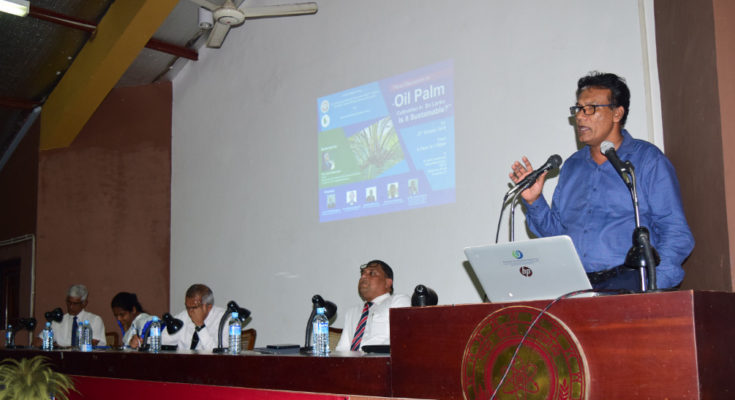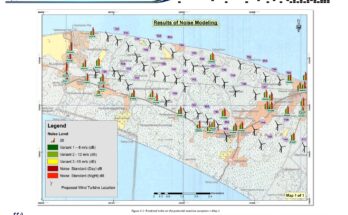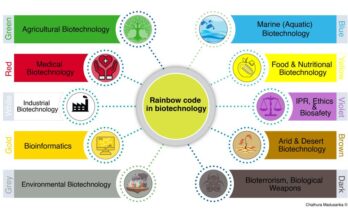In Sri Lanka the cultivation of oil palm for Edible oil production has become a controversial topic as there are two groups debating over its’ sustainability in Sri Lankan context. As a highly productive crop, the oil palm cultivation is very much popular in countries like Indonesea, Malayasia and Thailand. Going with this trend Sri Lanka too started experimental Oil Palm cultivation decades back and those proved the crop adopts well to the Sri Lankan conditions and more productive than coconut, rubber or tea. Recently several plantation companies started oil palm cultivation in southern part of the country including Galle, Kaluthara and Kegalle areas.
With many new oil palm cultivation programs coming up in above areas, many environmental organizations and village level organizations started protesting against these cultivation programs sighting environmental issues.
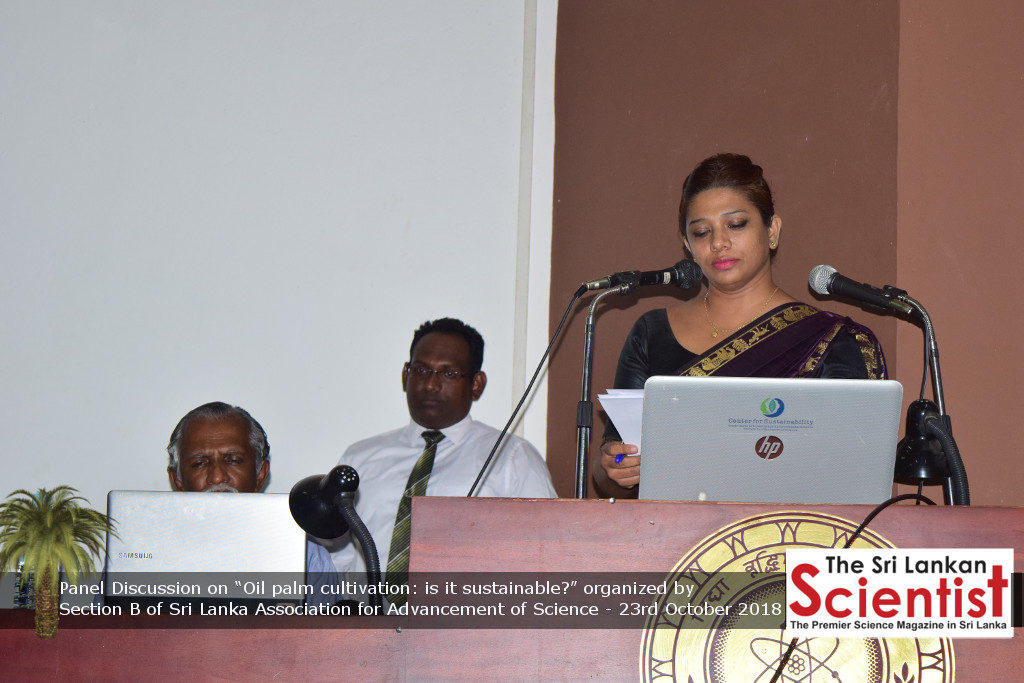
To give the opportunity for both parties to discuss this scientifically, Sri Lanka Association for Advancement of Science organized a panel discussion on the topic “Oil Palm Cultivation in Sri Lanka, is it Sustainable?” The discussion was held at SLAAS auditorium on 23rd October with the participation of around 100 participants representing various sections of the society. Prof. R C W M R A Nugawela, Wayamba University of Sri Lanka, Prof. H M Gamini Hitinayake, University of Peradeniya, Hemantha Withanage from Centre for Environmental Justices, Dr (Mrs.) Nayani Arachchige, Principal Research Officer (Crop Protection Division) from Coconut Research Institute and Mr Bhathiya Bulumulla representing the Palm Oil Industry Association participated the event as panelists. The discussion was moderated by Prof. Upul Subasinghe, Head, Department of Forestry & Environment, University of Sri Jayewardenepura.
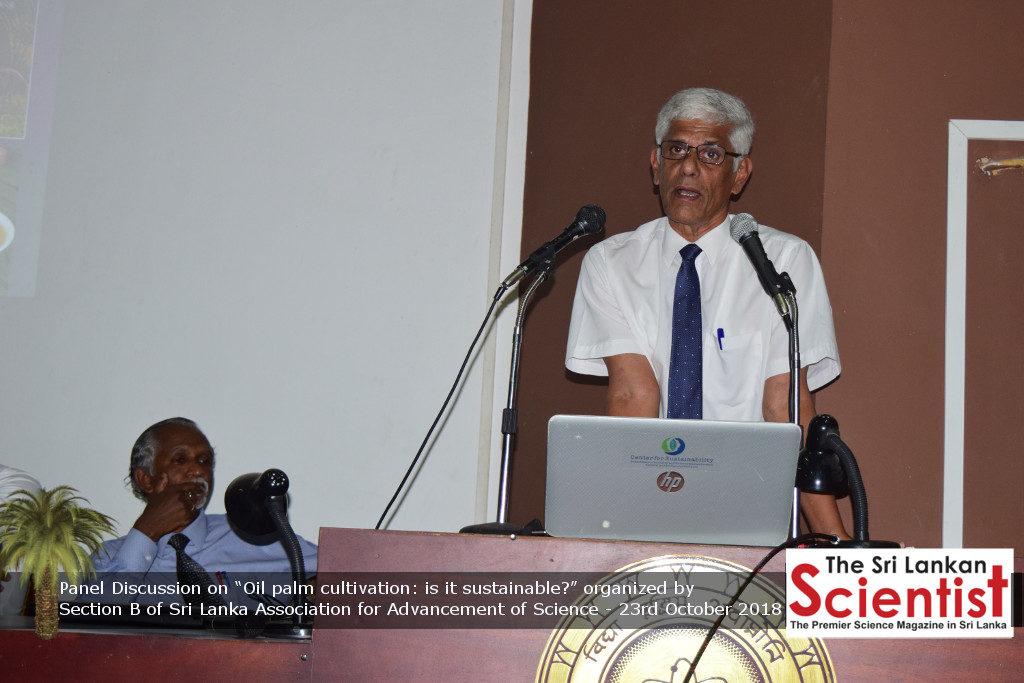
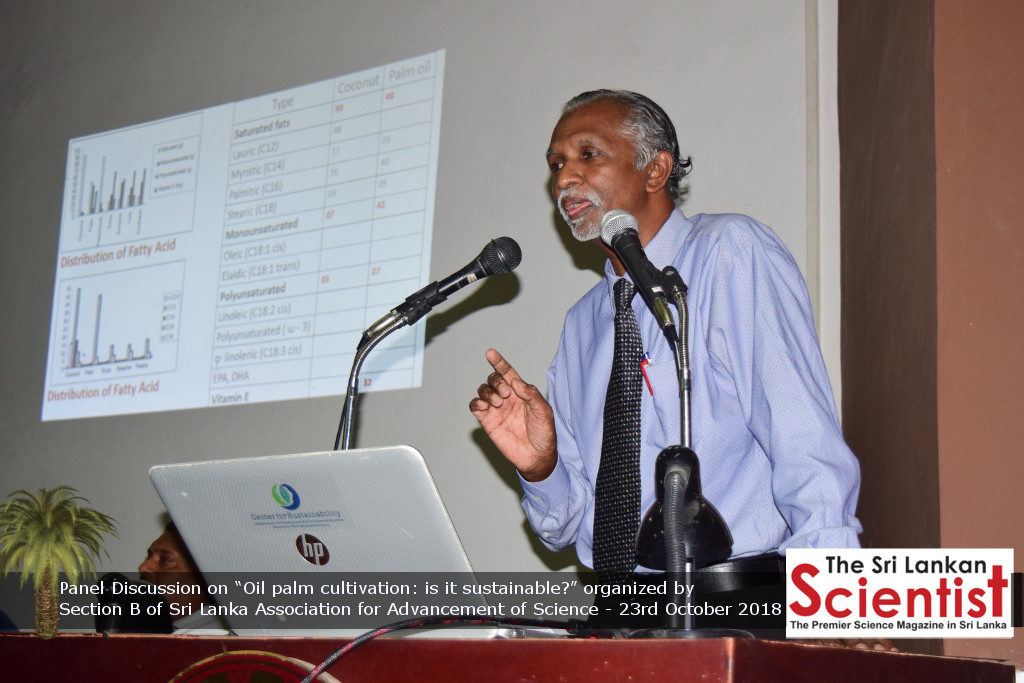
Starting the discussion Dr. Rangika Bandara, Head, Section B of SLAAS welcomed the panel and the participants to the discussion and described that Section B and SLAAS is always willing to create the stage for scientific discussions on various problems that are related to Agriculture and Forestry sectors in Sri Lanka.
During the discussion Prof. Nugawela talked about the importance of palm oil and discussed various uses of palm oil in our day to day lives. And also he explained that Sri Lanka as a country is facing a total deficit of 61.5% of the total oil requirement. He discussed and showed how Oil Palm cultivation can be used as a foreign exchange saver.
Prof. Hitinayaka in his presentation expressed that being a high output crop oil palm consume more resources including water and nutrients. So, he questioned whether this type of crop suitable for Sri Lankan plantation sector. He emphasized that if we are to cultivate oil palm in Sri Lanka, the crop should be limited to the areas that get rainfall over 3000 mm per year. And also, he pointed out that the crop should not be established in steep slopes over 40% slope, and water catchment areas or natural forests.
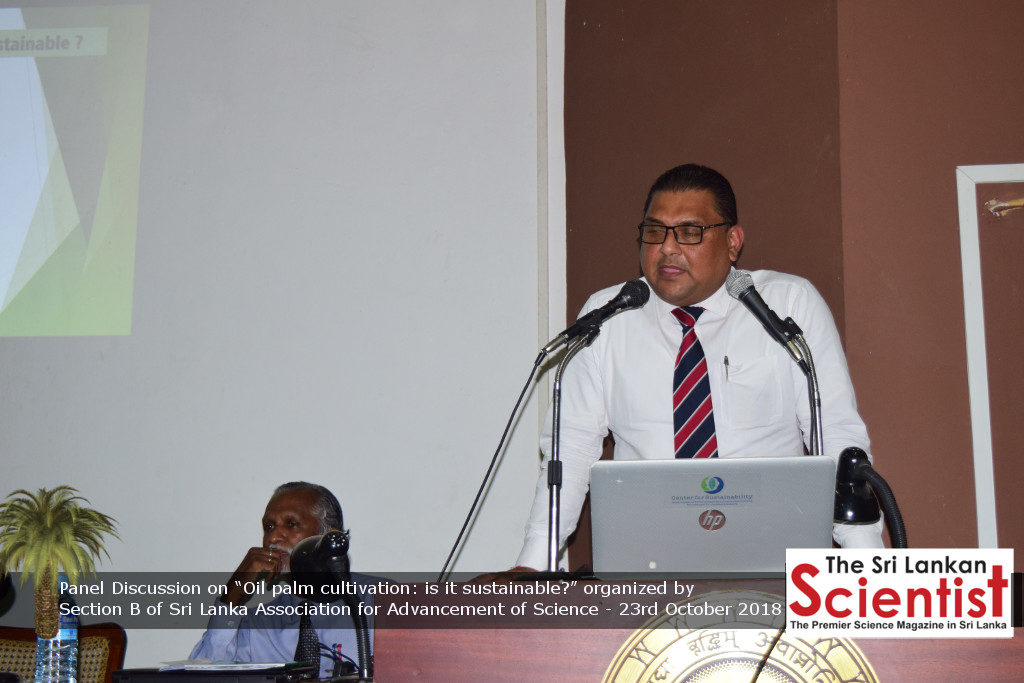
Mr Bhathiya Bulumulla explained how the Sri Lankan plantation companies are trying this crop while doing their best to minimize the environmental and social impact of this oil palm cultivation. He stated that even though the oil palm tree is a high water consuming plant, with the low plant density of a cultivation the water requirement per hectare shows only a little different compared to a rubber cultivation.
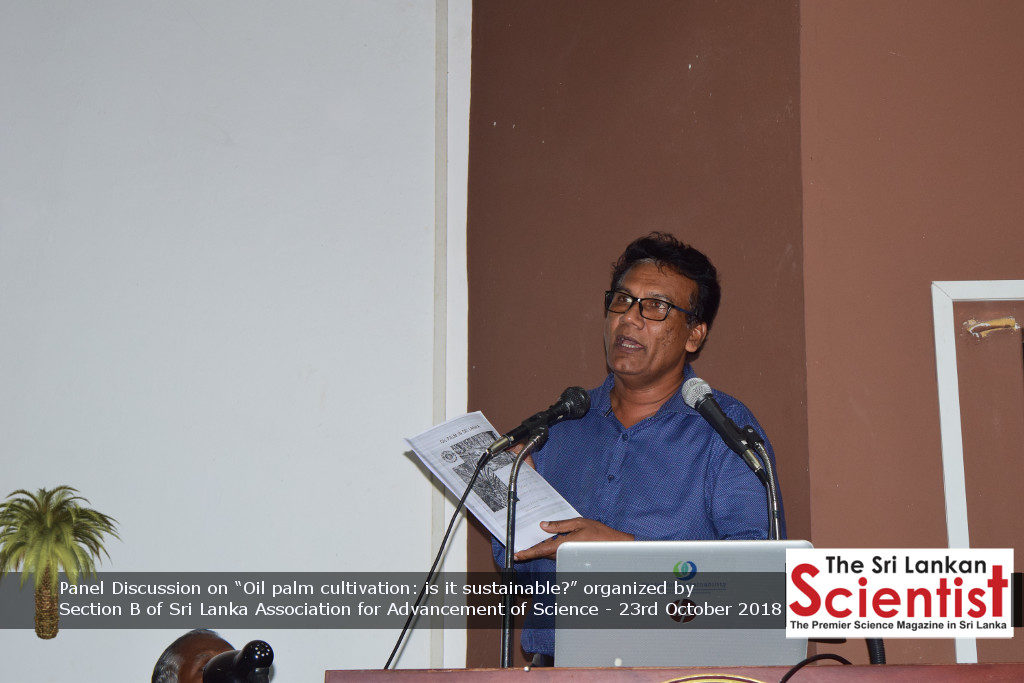
Mr. Hemantha Withanage in his speech described how the Sri Lankan environment is adversely affected by this oil palm cultivation. According to mr. Withanage Sri Lankan biodiversity, forest cover, and a lot of endemic fish and other flora and fauna are now threatened because of this crop. He pointed out that the effluent discharged by palm oil processing factories are directly added to the natural water ways harming the natural ecosystem.
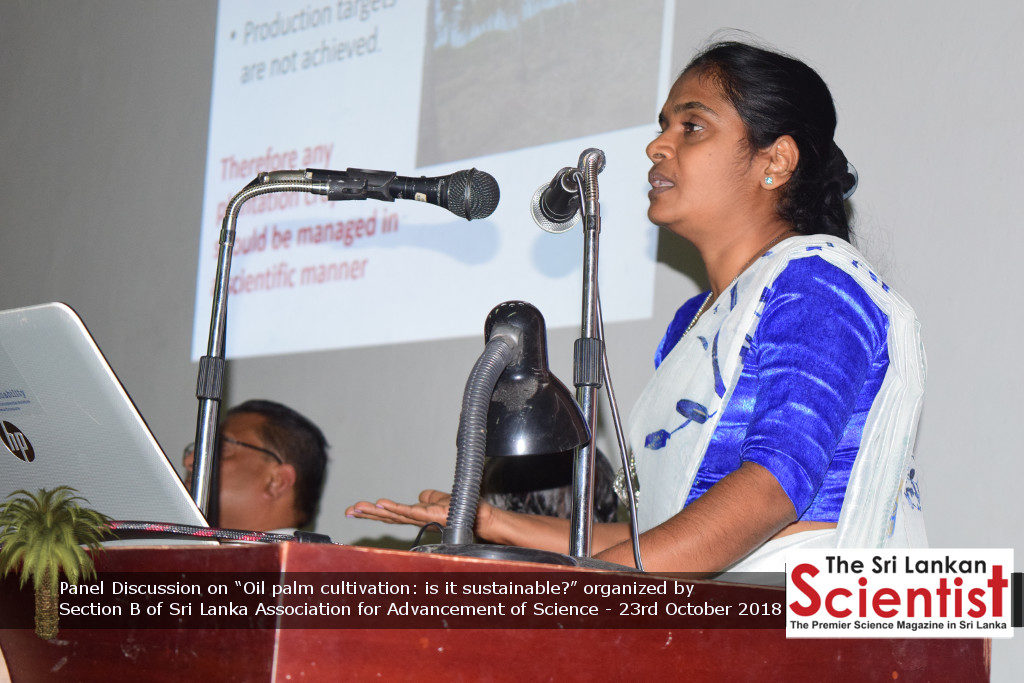
The final panelist Dr. Nayani Arachchige described why Coconut Research Institute has a role to play in oil palm cultivation. According to Dr. Aratchige the crop has been mandated to CRI by a letter from The President in 2012. At present it is the CRI that provide recommendations on policy decisions and technical guidance related to the oil palm cultivation in Sri Lanka. She listed out CRI Guidelines for Sustainable Management of Oil palm, which are a set of guidelines imposed by CRI in order to achieve the sustainability minimizing social and environmental impact of oil palm cultivation. Some of the main recomendation in the list are as follows,
- Only marginal lands (unsuitable lands for other crops) should be converted into oil palm
- Oil palm is recommended to Agro-ecological regions with Mean annual rainfall of >2500mm only
- No cultivation of oil palm in, In or close proximity to water catchment areas, Along the river banks or any other water channels, reservoirs etc. and on hill tops (maintained as water catchment areas)
- For any reason oil palm should not be cultivated in or close to high conserved areas such as natural forests.
- Forest areas within the existing plantations should be left intact.
- Zero burning (for minimizing biodiversity loss and avoiding greenhouse gas emission)
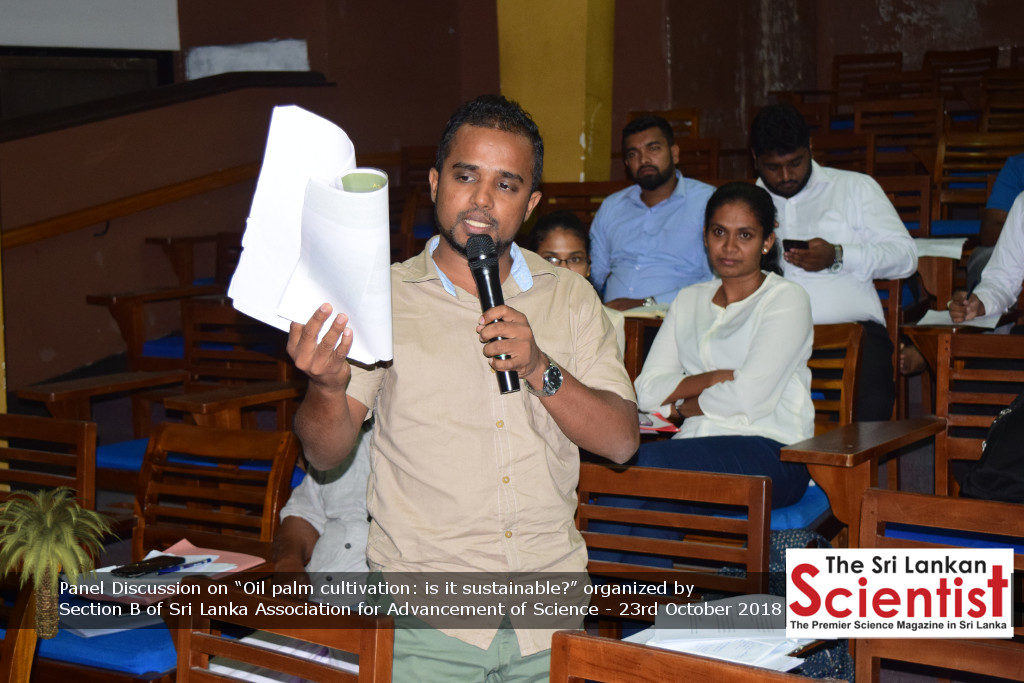
After the speeches by the panelists the audience was given the chance to join the discussion. Many participants shared their experiences and their inputs on oil palm cultivation in Sri Lanka. They mainly highlighted regional impacts of oil pam cultivation and pointed out how biodiversity hotspots in Galle and Kaluthara districts are adversely affected due to the oil palm cultivation. And also they highlighted the lack of proper monitoring and governing system for oil palm cultivation in Sri Lanka.
Participants and panelists thanked the Section B of SLAAS for organizing this discussion which paved the way to share and discuss different ideas on oil palm cultivation.

